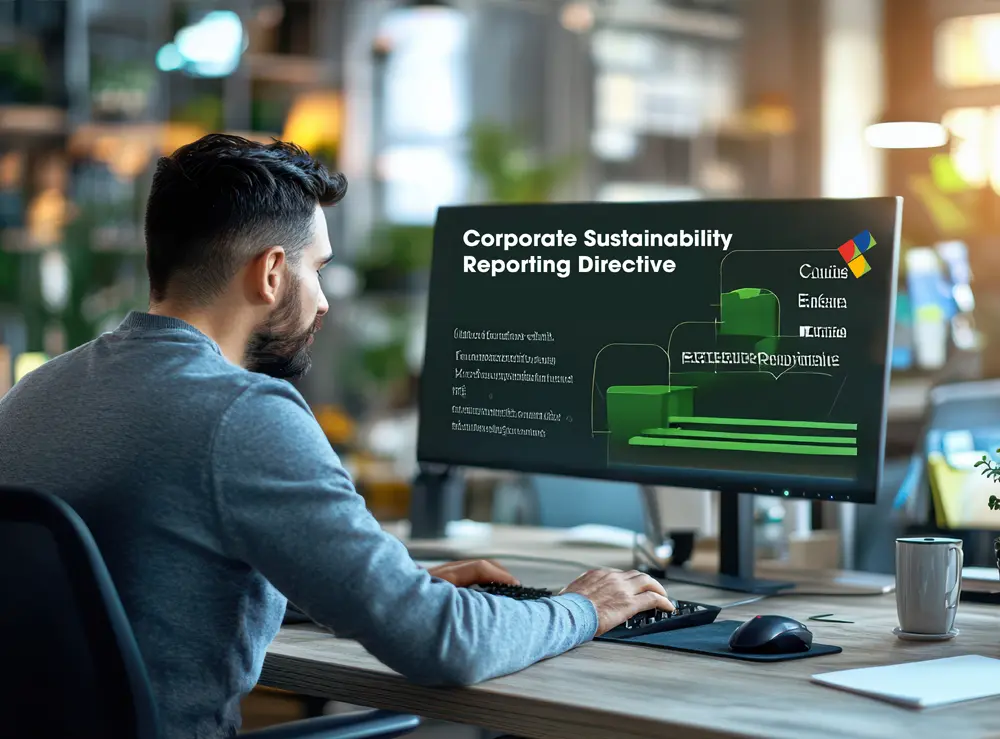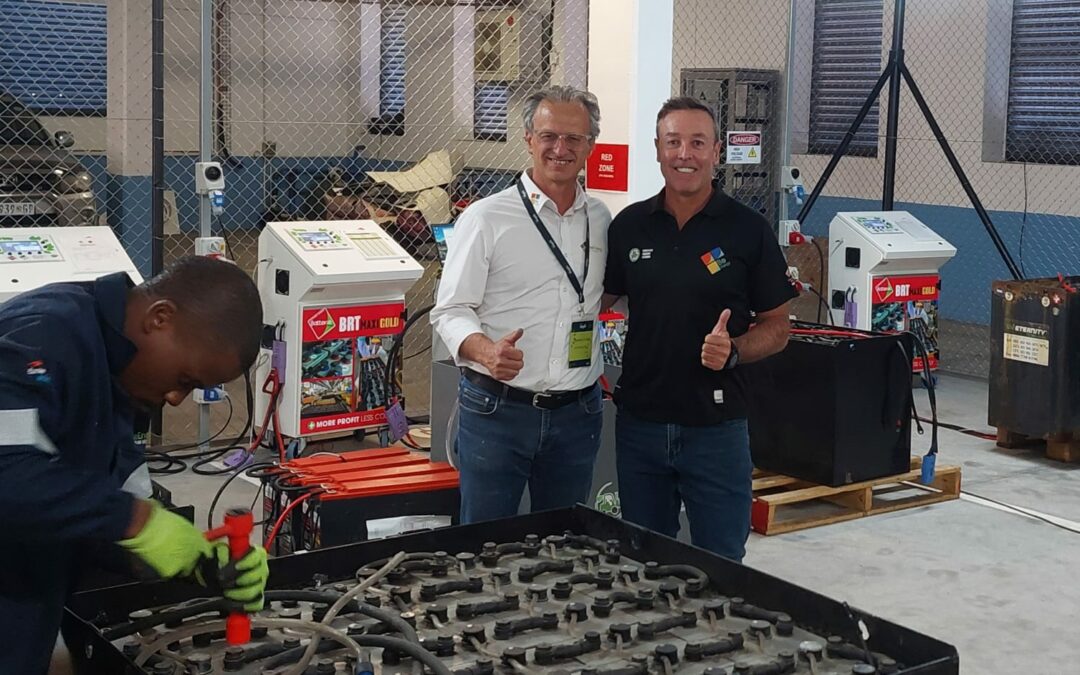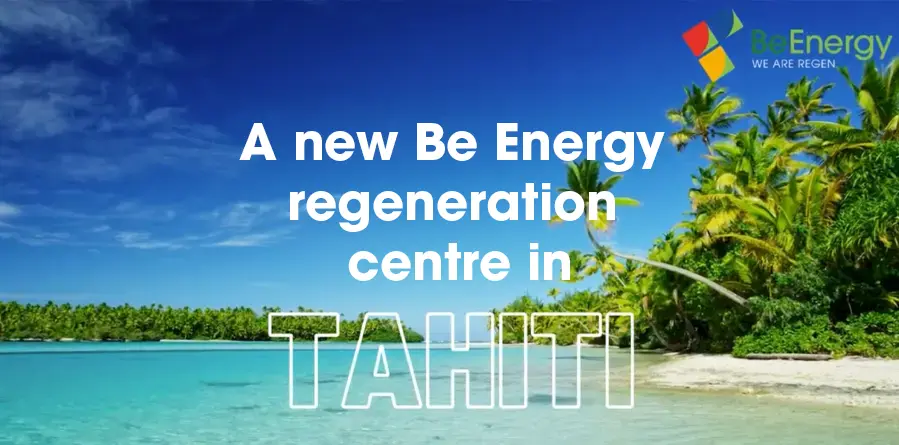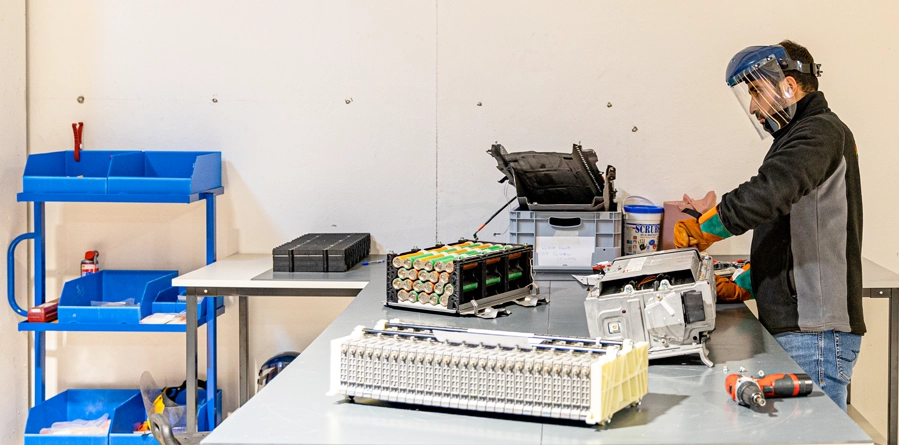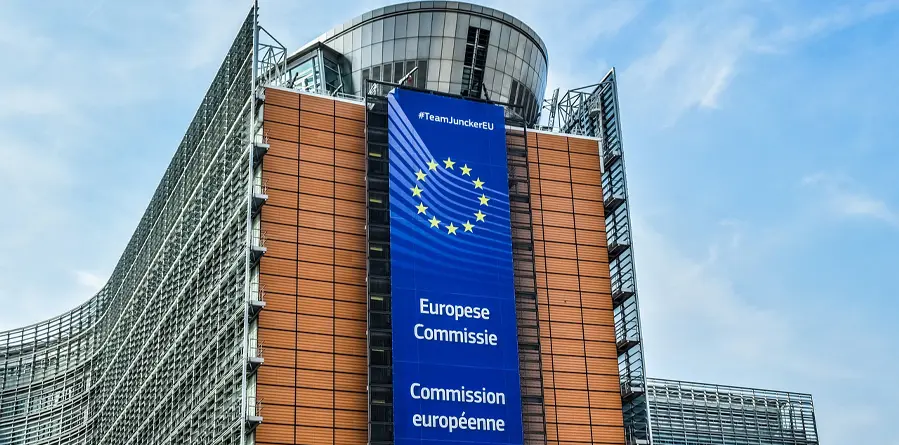
Since the introduction of the CSRD (Corporate Sustainability Reporting Directive) in January 2024, European companies have to face a new challenge: providing clear and transparent information on their environmental, social and governance (ESG) performance. This directive replaces the former NFRD (Non-Financial Reporting Directive) and applies to a larger number of companies, now including more than 50,000 entities in Europe, compared with 11,000 previously.
The main objective of the CSRD is to strengthen corporate responsibility in terms of sustainable development by introducing more rigorous and standardised reporting standards, known as ESRS (European Sustainability Reporting Standards).
One of the cornerstones of the CSRD is double materiality analysis, which requires companies to report on both the impact of their environment on their financial performance, and the impact of their activities on the environment and society. It is in this context that battery regeneration, an innovative process developed by Be Energy, is positioned as a concrete solution for meeting ESRS criteria while at the same time contributing to the transition towards a circular economy.
Understanding the ESRS standards: a structuring framework for companies
The ESRS standards were adopted by the European Commission in July 2023, for implementation in January 2024. They aim to standardise the way in which companies collect and publish their data on ESG impacts. These standards are divided into three main categories:
- Environmental standards, which cover aspects such as climate change, pollution, biodiversity and the circular economy.
- Social standards, which cover human rights, working conditions and impacts on communities.
- Governance standards, which examine companies’ management practices, including transparency and management accountability.
The central element of the ESRS standards is the analysis of double materiality. This approach requires companies to ask themselves two key questions:
- How do sustainability issues, such as climate change, affect the company’s financial performance?
- What impact do the company’s activities have on the environment and society?
For each topic covered, companies must demonstrate the relevance or lack of relevance of the issue through their materiality analysis. If a topic is deemed irrelevant, the company must justify this omission.
Battery regeneration: a practical response to ESRS criteria
Battery regeneration is a process that aims to extend the life of used batteries by improving their performance while reducing waste production. Be Energy, a pioneer in this field, opened the world’s first plant dedicated to this technology in Avignon in 2023. This process is directly in line with the objectives of the ESRS standards, in particular the criteria relating to the environment and the circular economy.
- Reduced environmental impact: regenerating batteries significantly reduces CO2 emissions. For every tonne of battery regenerated, Be Energy saves around three tonnes of CO2 compared with recycling. This approach contributes to reducing the carbon footprint, a key element of the environmental reporting required by the ESRS.
- Circular economy: the ESRS criteria require companies to demonstrate how they are adopting circular economy strategies. Battery regeneration meets this requirement perfectly by reusing resources that would otherwise be thrown away for the same purpose. This significantly extends the life of batteries, helping to reduce programmed obsolescence.
- Auditability and transparency: another essential point of the ESRS standards is the auditability of data. Companies must provide detailed and verifiable reports on their ESG impacts. Thanks to the technological advances made by Be Energy, a Riverse-certified company for the sale of carbon credits on the voluntary carbon market, the battery regeneration process can be monitored and audited, thereby guaranteeing the reliability of the environmental data submitted as part of the reporting process. At the end of each regeneration, a carbon footprint is produced.
Be Energy has demonstrated that battery regeneration offers a tangible solution for companies seeking to reduce their environmental impact while meeting the requirements of the CSRD and ESRS standards. By doubling the lifespan of batteries and generating carbon credits via a process that is 50 to 70 times less carbon-intensive than recycling, Be Energy is contributing to a greener, more sustainable economy.
Challenges and opportunities for companies faced with CSRD and ESRS
While battery regeneration offers many benefits for companies seeking to comply with ESRS standards, it also presents certain challenges. One of the biggest obstacles is quantifying the environmental benefits. For organisations to take full advantage of regeneration in their reporting, they need to be able to demonstrate, in a verifiable way, the savings in terms of CO2 emissions and other positive impacts.
However, for companies adopting this model, the opportunities are numerous:
- Regulatory compliance: battery regeneration helps companies to comply with CSRD requirements, while demonstrating their commitment to a circular economy.
- Improved brand image: by integrating sustainable practices, companies can strengthen their CSR (Corporate Social Responsibility), attract sustainability-minded investors and position themselves as key players in the energy transition.
- Reduced costs: in addition to the environmental benefits, battery regeneration can halve costs by extending the life of equipment. This offers a significant competitive advantage in sectors where optimisation of resources is imperative.
Battery regeneration is much more than a technological innovation: it is a concrete response to the requirements of the CSRD and ESRS standards. By adopting practices such as regeneration, companies can not only meet regulatory expectations, but also improve their environmental, social and financial performance. In a context where sustainability is at the heart of economic concerns, battery regeneration represents an opportunity for companies to prepare effectively for the ecological transition.

